Living with the Samsung Gear S2: Still dependent, but more independent than others
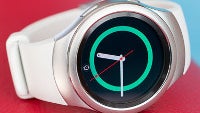
Wearables, there’s no end to them anytime soon. Based on the trends, consumers are ponying up to pick them up to complement whatever smartphone they’re using as their daily driver. While there’s an expansive selection to choose from, there are a select few that manage to pique the interest of people more so than others. We’ve reviewed several in 2015, but the Samsung Gear S2 proved to be one of the more original, invigorating wearables to scope out – more so considering it was highly acclaimed amongst critics in general.
For the last couple of months, we’ve been spending more intimate time using the Samsung Gear S2 in our travels. This isn’t just the ordinary Bluetooth connected Gear S2, oh no, but rather, the cellular connected version courtesy of AT&T. Naturally, there’s additional functionality in tow with this one, such as being able to independently place phone calls and receive text messages, which absolutely has its usefulness with certain situations. At the end of the day, however, we’re interested more in what it does on a deeper level.
Thus far, most wearables and smartwatches are still closely chained to their master device – a smartphone in most instances. With this cellular connected Gear S2, it begs the question of whether or not it can truly be independent, breaking the bonds that normally exist there.
We won’t go into detail about the Samsung Gear S2’s design. As we’ve covered in our review, its futuristic, sci-fi aesthetics is undeniably original and meshes nice for most outings – save for those formal events, of course. For active users that love to exercise, it’s sensible enough to handle even the most sweatiest and rigorous workouts, due to the durability of its rubbery band to resist moisture buildup.
However, for all of its beauty and originality, we just wish there were more affordable wrist straps. Swapping them out is never an issue, but the lack of diversity makes it tough to be different from the next person you see wearing the Gear S2. Over on Sammy’s web site, they offer a few different straps, but they’re all the same rubbery variety with different patterns on them.
Indeed, there are a few ‘premium’ straps that we uncover by rummaging through Amazon’s collection – like a stainless steel link one and another that resembles the Milanese Loop for the Apple Watch. The limited collection is still a sore spot in our opinion, especially when the official ones from Samsung still fetch for a premium – upwards around the $40 to $50 range specifically.
After experiencing Android Wear for a long time with various smartwatches, we have a few stark feelings about departing to Samsung’s Tizen experience that’s powering the Gear S2. We have to hand it to the developers and programmers, seeing that the software just moves with grace and finesse. Add to that how they’ve employed an alternative way of navigating courtesy of its rotating bezel, we prefer its implantation a lot more than others.
Whereas Android Wear tends to overpower us with constant card notifications, Tizen is oppositely more selective in what it pushes out to us. Important stuff such as text messages and missed calls appear to the left of the main screen, which is what you’d want, right? Doing the anti-Android Wear thing, Tizen doesn’t automatically push out notifications from our smartphone. Needless to say, it’s less maddening with that, since we can pick and choose what we want through the corresponding Samsung Gear app.
Okay, we know what you’re thinking already. If you’re heavily invested into Google’s services, then your best bet is to stick with Android Wear – as opposed to Tizen. In a way, we can vouch for that logical deduction, just because Samsung’s platform isn’t particularly attuned. Having been spoiled by many of Google’s services, like Google Voice, Google Maps, and Gmail, it’s tough to not have them at our disposal through the Gear S2.
Not surprisingly, there are alternatives that try to ease the lack of them. For example, you have HERE maps for simple navigational searches, but if you want true turn-by-turn directions, you’ll have to look elsewhere. There’s a reason why Android Wear exists, and this is a perfectly good response why that’s the case.
One of the issues that customers face with cellular connected accessories, a smartwatch in this case, is that a number needs to be attached to the unit, seeing that it features an embedded SIM. In order for it to make and receive phone calls, or text messages, a phone number is assigned to it. Now, for anyone who has dealt dealing with juggling multiple devices in their account, it’s a pain in this case to call one number for the Gear S2 – and another for your smartphone.
Thankfully, NumberSync solves this predicament in a simple and straightforward way. Essentially, when it’s enabled on your account, the Samsung Gear S2 is forwarded calls and text messages from your usual number. And when replying to messages, or placing phone calls, the number your receiver sees is your usual one – your smartphone, that is.
This has to be one of the most crucial parts about the experience, one that allows us to even leave our smartphone behind. In fall fairness, NumberSync is an invaluable part of its arsenal that eliminates having to deal with two numbers, especially when only one of them is your main one.
Our time with the Samsung Gear S2 has been an endearing one, using it on important trips like CES very recently. Although rare still, we did come across a few occasions when our smartphone died before the Gear S2 – so in this particular case, the connectedness of it proves vital.
We dream about a time when all of the power and functions of our smartphone can be accessed through our wrist, on a smartwatch of some kind most likely, but that’s still largely not feasible. The Samsung Gear S2 delivers a solid package that doesn’t disappoint, eclipsing many of the handful of other wearables and smartwatches we’ve used over the course of the last year.
True, it’s one of the more independent smartwatches we’ve come across, which is a testament on its own knowing fully that the software powering it is still relatively new. A lot is needed to deepen its third-party apps support, but that’s for time to sort out.

For the last couple of months, we’ve been spending more intimate time using the Samsung Gear S2 in our travels. This isn’t just the ordinary Bluetooth connected Gear S2, oh no, but rather, the cellular connected version courtesy of AT&T. Naturally, there’s additional functionality in tow with this one, such as being able to independently place phone calls and receive text messages, which absolutely has its usefulness with certain situations. At the end of the day, however, we’re interested more in what it does on a deeper level.
Thus far, most wearables and smartwatches are still closely chained to their master device – a smartphone in most instances. With this cellular connected Gear S2, it begs the question of whether or not it can truly be independent, breaking the bonds that normally exist there.
More bands please
We won’t go into detail about the Samsung Gear S2’s design. As we’ve covered in our review, its futuristic, sci-fi aesthetics is undeniably original and meshes nice for most outings – save for those formal events, of course. For active users that love to exercise, it’s sensible enough to handle even the most sweatiest and rigorous workouts, due to the durability of its rubbery band to resist moisture buildup.
However, for all of its beauty and originality, we just wish there were more affordable wrist straps. Swapping them out is never an issue, but the lack of diversity makes it tough to be different from the next person you see wearing the Gear S2. Over on Sammy’s web site, they offer a few different straps, but they’re all the same rubbery variety with different patterns on them.
Indeed, there are a few ‘premium’ straps that we uncover by rummaging through Amazon’s collection – like a stainless steel link one and another that resembles the Milanese Loop for the Apple Watch. The limited collection is still a sore spot in our opinion, especially when the official ones from Samsung still fetch for a premium – upwards around the $40 to $50 range specifically.
Tizen, it’s not as overpowering with the notifications
After experiencing Android Wear for a long time with various smartwatches, we have a few stark feelings about departing to Samsung’s Tizen experience that’s powering the Gear S2. We have to hand it to the developers and programmers, seeing that the software just moves with grace and finesse. Add to that how they’ve employed an alternative way of navigating courtesy of its rotating bezel, we prefer its implantation a lot more than others.
Whereas Android Wear tends to overpower us with constant card notifications, Tizen is oppositely more selective in what it pushes out to us. Important stuff such as text messages and missed calls appear to the left of the main screen, which is what you’d want, right? Doing the anti-Android Wear thing, Tizen doesn’t automatically push out notifications from our smartphone. Needless to say, it’s less maddening with that, since we can pick and choose what we want through the corresponding Samsung Gear app.
Where’s the Google?
Okay, we know what you’re thinking already. If you’re heavily invested into Google’s services, then your best bet is to stick with Android Wear – as opposed to Tizen. In a way, we can vouch for that logical deduction, just because Samsung’s platform isn’t particularly attuned. Having been spoiled by many of Google’s services, like Google Voice, Google Maps, and Gmail, it’s tough to not have them at our disposal through the Gear S2.
Not surprisingly, there are alternatives that try to ease the lack of them. For example, you have HERE maps for simple navigational searches, but if you want true turn-by-turn directions, you’ll have to look elsewhere. There’s a reason why Android Wear exists, and this is a perfectly good response why that’s the case.
NumberSync means you get to keep your number
One of the issues that customers face with cellular connected accessories, a smartwatch in this case, is that a number needs to be attached to the unit, seeing that it features an embedded SIM. In order for it to make and receive phone calls, or text messages, a phone number is assigned to it. Now, for anyone who has dealt dealing with juggling multiple devices in their account, it’s a pain in this case to call one number for the Gear S2 – and another for your smartphone.
Thankfully, NumberSync solves this predicament in a simple and straightforward way. Essentially, when it’s enabled on your account, the Samsung Gear S2 is forwarded calls and text messages from your usual number. And when replying to messages, or placing phone calls, the number your receiver sees is your usual one – your smartphone, that is.
This has to be one of the most crucial parts about the experience, one that allows us to even leave our smartphone behind. In fall fairness, NumberSync is an invaluable part of its arsenal that eliminates having to deal with two numbers, especially when only one of them is your main one.
Less dependent, but not entirely independent
Our time with the Samsung Gear S2 has been an endearing one, using it on important trips like CES very recently. Although rare still, we did come across a few occasions when our smartphone died before the Gear S2 – so in this particular case, the connectedness of it proves vital.
We dream about a time when all of the power and functions of our smartphone can be accessed through our wrist, on a smartwatch of some kind most likely, but that’s still largely not feasible. The Samsung Gear S2 delivers a solid package that doesn’t disappoint, eclipsing many of the handful of other wearables and smartwatches we’ve used over the course of the last year.
True, it’s one of the more independent smartwatches we’ve come across, which is a testament on its own knowing fully that the software powering it is still relatively new. A lot is needed to deepen its third-party apps support, but that’s for time to sort out.


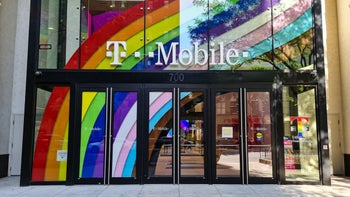
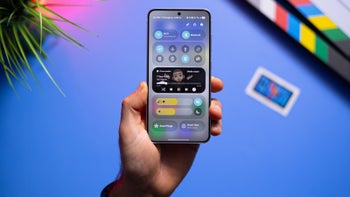



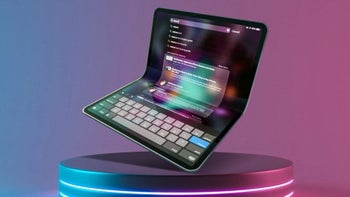
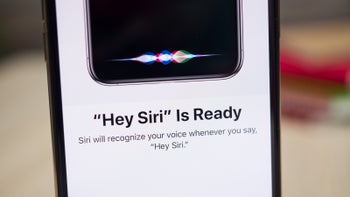



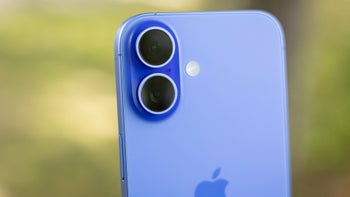
Things that are NOT allowed: